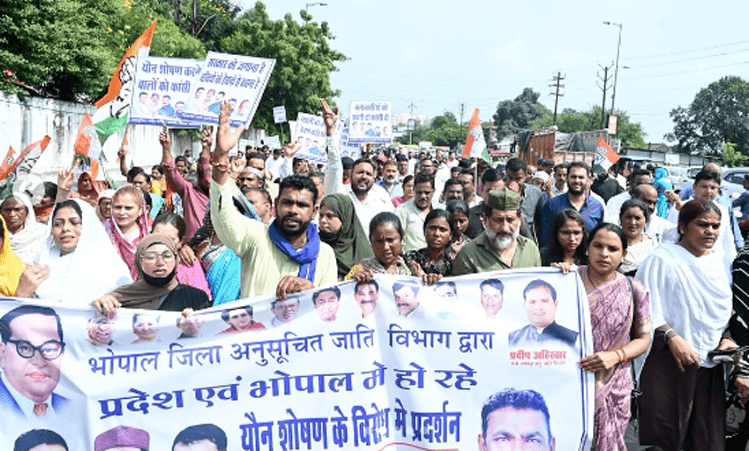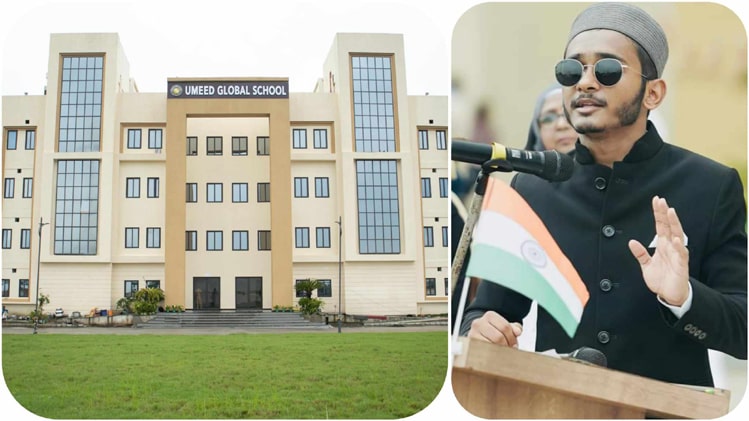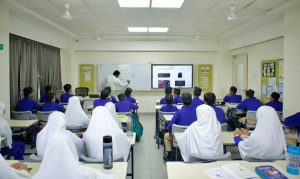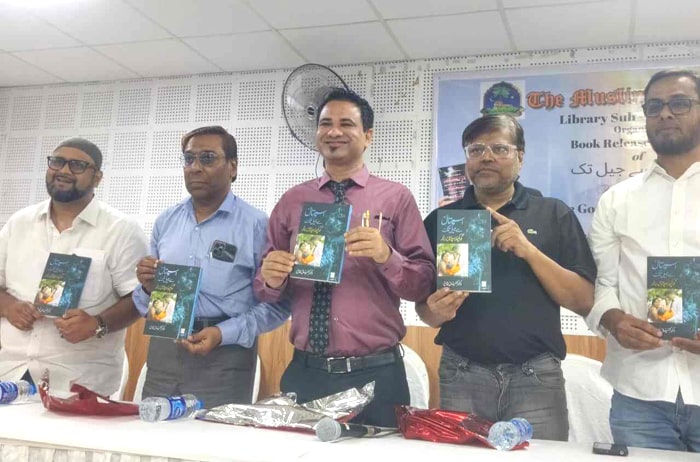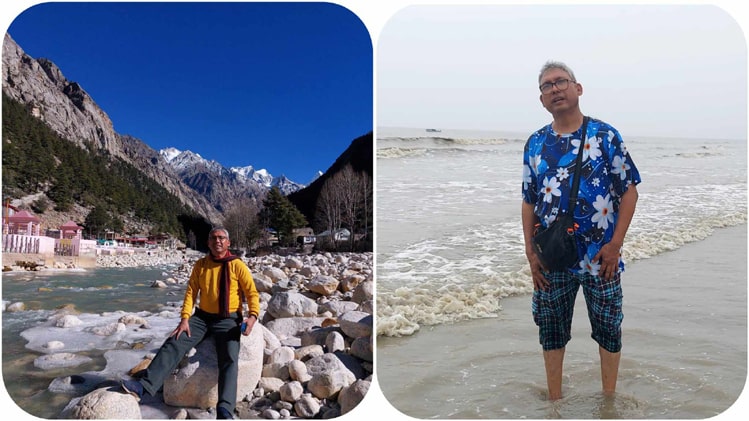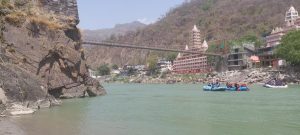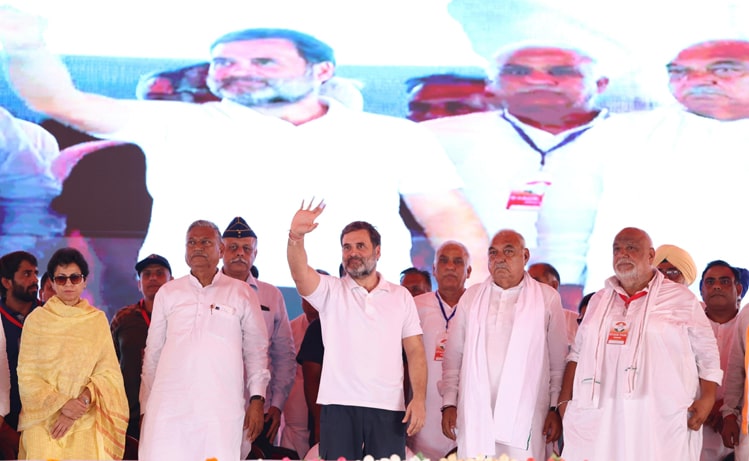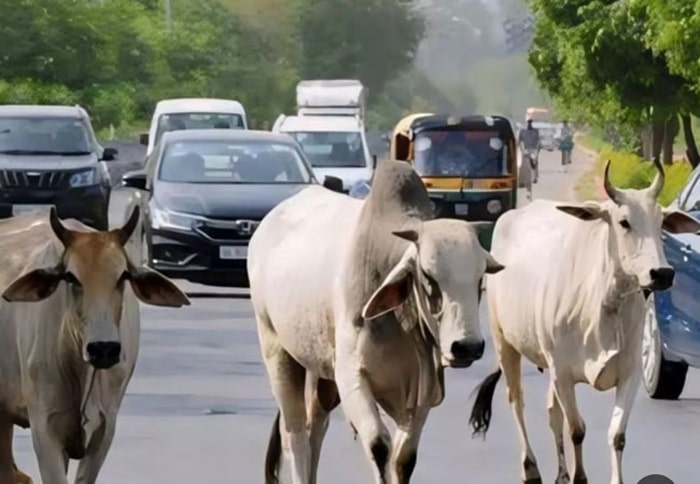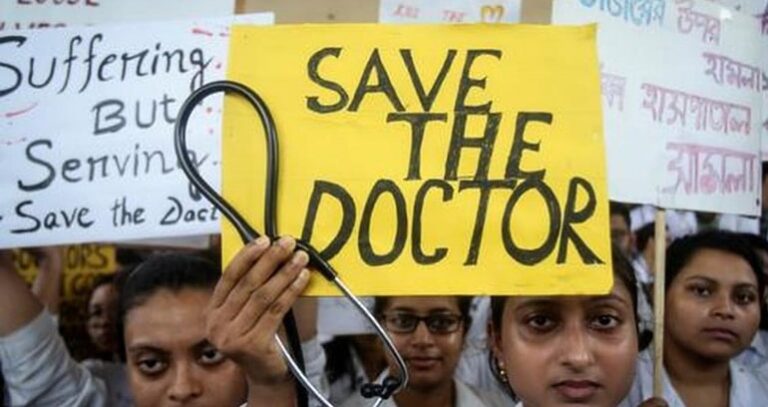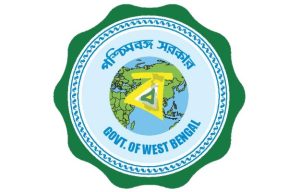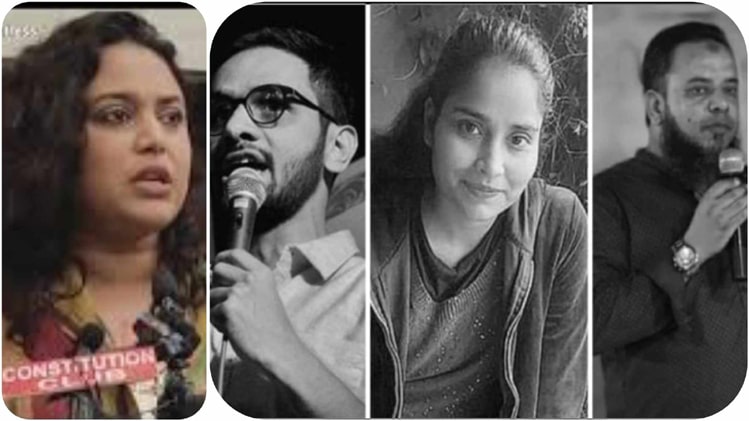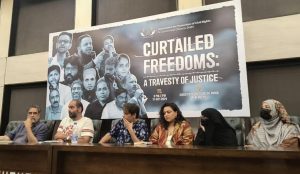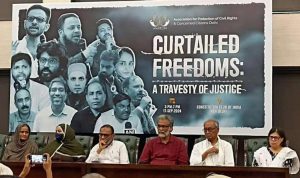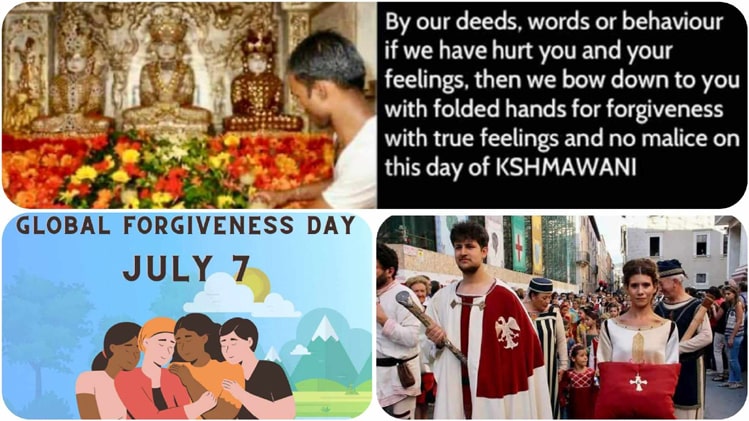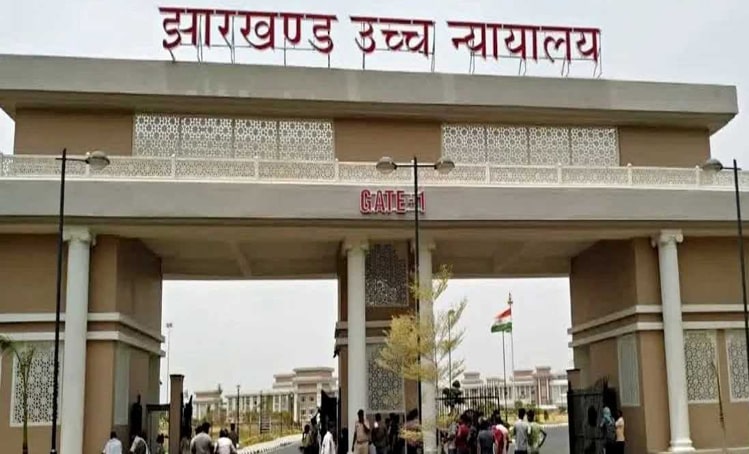Bhopal: A 5-year-old girl was raped and brutally murdered by a neighbour in Shahjahanbad of Bhopal. The accused Atul Nal strangled the child after committing the rape. After going missing for three days, her body was discovered on September 26 in a water tank within the very building where she lived. Despite extensive search efforts involving over 200 police personnel from multiple stations, drones, and search dogs, authorities were unable to locate the girl in time leading to public outrage and criticism of the police response. The prime accused along with his mother and sister has been arrested for their roles in this horrific crime.
Protests erupted throughout the state capital demanding the death penalty for the accused concerning the increasing crime rates against women and girls. The locals in Shahjahanbad rallied and gathered at the police station voicing their anger and frustration. A Special Investigation Team (SIT) has been formed to investigate the case.
A video showed that the mother and sister of the accused were misleading the police during the investigation. The footage reveals both women alongside the prime accused, Atul, standing at their door during the time of the girl’s death feigning sympathy towards the victim’s family while smoothly concealing their involvement in the crime. They audaciously questioned authorities about the safety of women and children displaying no shame or fear in their demeanor.
Rising crimes against women and children in MP
Data from the city police commissioner revealed rape cases in Bhopal rose from 330 in 2021 to 456 in 2022, 523 in 2023, and 381 in just the first eight months of 2024. NCRB data from 2022 shows Madhya Pradesh ranks second in crimes against children with 20,415 cases just behind Maharashtra’s 20,762.
In 2022, 11,717 children went missing in Madhya Pradesh, with 75% (8,844) being girls, as per RTI data analyzed by the NGO Child Rights and You (CRY). On average, 32 children went missing daily, with over 24 being girls. In 2021, 11,607 children went missing in Madhya Pradesh, with 81% (9,407) being girls, according to NCRB data. In 2022, missing girls declined by 6%, but missing boys increased from 19% to 25%. From 2018 to 2022, 53,125 kids went missing in total, with 78% being girls.
According to the State Crime Record Bureau (SCRB), 5,348 women were sexually assaulted in the state in 2023. The highest number of crimes against women in 2023 occurred in Bhopal and Indore zones. A total of 7,773 women were molested, 10,306 kidnapped, and 13,671 faced obscenities statewide in 2023. Bhopal topped the list with 7,745 cases, followed closely by Indore with 7,738. Gwalior reported 6,331 cases, Rewa 6,296, and Ujjain 5,169.
Interestingly, the Madhya Pradesh Women’s Commission has been dysfunctional for years with the chairperson’s position vacant for over four years.
Death penalty law fails to deter a surge in rape.
BJP MLA Archana Chitnis called the incident unfortunate. Speaking to eNewsroom she said, “The Madhya Pradesh government is the first to pass a law to award capital punishment, yet incidents like these continue. There are multiple factors at play—the influence of entertainment, societal culture, and more—all impacting people’s minds. To prevent such incidents, families, society, government, and even religious organizations must act collectively. The situation is deeply concerning. How do we send our daughters out for education when such cases occur? Many claim Madhya Pradesh has a high number of FIRs, but it’s because our government ensures that an FIR is registered immediately against such anti-social elements. The accused are arrested in large numbers following complaints. Collective efforts can improve this situation. Entertainment, music, literature, and cultural activities shape our personalities, and we must address these issues at multiple levels. The accused have no religion or caste; they are simply criminals. The media should also present these matters in a balanced and healthy manner.”
Chief minister Mohan Yadav in a lengthy post on “X” wrote, “There is a provision of death penalty for such heinous crimes and our government will try to ensure that such criminals get the harshest punishment like death penalty.”
In 2018, the Madhya Pradesh government passed the Criminal Law (Amendment) Bill, 2018 which made the state one of the first in India to introduce the death penalty for rape of girls aged 12 years or younger. This amendment strengthened existing laws under the Indian Penal Code (IPC) specifically Sections 376AB and 376DB to impose the death penalty for such offenses.
Despite harsh penalties like death sentences, this central Indian state saw a 66% rise in rape cases in 2023 with an average of 14 women/girls sexually assaulted daily, as per SCRB data.
Opposition criticizes the government’s failure to protect minors.
Recent cases of child sexual abuse even in educational settings have also raised concerns about the safety of children. A 16-year-old boy was sexually harassed by his chemistry teacher, a 5-year-old girl was abused by her school van driver, and a 3-year-old girl was abused by her IT teacher in the past week. On September 27, Madhya Pradesh Congress President and former cabinet minister Jitu Patwari shared a post on X highlighting seven reported cases of sexual harassment and rape of minor girls across different districts of Madhya Pradesh within a week.
While the rape and murder of a trainee doctor in RG Kar Hospital of Kolkata shook the collective conscience of the nation leading to mass protests, the rape and murder of a minor in Bhopal did not bother countrymen. Additionally, this September, a woman was raped in broad daylight at a busy crossroad in Ujjain. Yet, bystanders chose to film the crime and post it on social media instead of helping the victim, while the nation remained silent. The disparity in reaction raises troubling questions about societal priorities and the perceived value of lives based on political context.
Congress MLA Arif Masood led a protest rally in Shahjahanbad criticizing the state government’s failure to protect women and children. He called for the chief minister’s resignation if he had any shame left. Masood also questioned the accountability of Collector Kaushlendra Vikram Singh, asking, “Where is the collector who once boasted in Berasia? Many incidents have occurred. Why are the collector and SP hiding now?”
On September 12, protests erupted at Berasia police station in Bhopal after three minor schoolgirls were allegedly blackmailed by local men. The accused who were arrested for taking photos and attempting to extort the girls faced demands for action from Hindu organizations including the Bajrang Dal. The situation was controlled when Collector Kaushalendra Singh intervened promising swift action while standing on a car’s bonnet.
The accused were slapped with the NSA (National Security Act). Masood was referring to this incident.
Influence of pornography worrying.
Anurag Pandey of the Madhya Pradesh Commission for Protection of Child Rights (MPCPCR) said that we are focusing on awareness and personal safety in response to rising cases in Bhopal. Aggression levels are increasing despite our efforts. “We have found in reported cases that many perpetrators watch pornography before committing rape while intoxication plays a significant role in diminishing humanity. The Madhya Pradesh government is rapidly reporting all cases and law is doing its part but we seek additional resources and measures. We have discussed prevention strategies regarding intoxicants and tightening the grip on violators. We’re also investigating a troubling new pattern where families support the accused. Shocking instances, like the murder and rape of a minor where the family tried to hide the body, are alarming. This behavior is incomprehensible and we are consulting experts to understand the psychological reasons behind it. Although stricter laws are in place, crime rates continue to rise. Improved reporting does not indicate a decrease in crime, so raising awareness remains essential.”
In another shocking incident, a nine-year-old girl was raped and murdered by her 13-year-old brother in Rewa after watching a pornographic video on her mobile phone. The incident happened in April which the mother and two elder sisters of the accused tried to cover up.
The Supreme Court of India recently ruled that viewing, possessing, and not reporting child pornography is an offence under the POCSO and IT Acts, even if not shared further.
Concerns over liquor and drug consumption and its link to rising crime rates
Congress MLA Atif Aqueel in conversation with eNewsroom said every crime has its complexities but the recent rape and murder in Eidgah Multi highlight a deeper issue: the unchecked illegal sale of substances like hashish, opium, marijuana, and alcohol. These readily available intoxicants often drive individuals toward violent acts. Crime rates continue to rise despite the commissioner rule showing failure to address root causes.
“A young girl was raped and murdered yet authorities have failed to take prompt action against this illegal sale creating fear and insecurity. Women and children no longer feel safe in their neighbourhoods. I raised these concerns with officials six months ago, but no action was taken. Criminals must face justice regardless of their background, especially in cases involving minors. We demand severe penalties including capital punishment to deter such crimes. It’s alarming that even a 5-year-old fell victim. The core problem remains the easy access to intoxicants which diminish humanity. We must stop illegal sales to protect society and prevent more tragedies. The government must act now to ensure the safety and dignity of women and children.”
Liquor consumption in Madhya Pradesh has risen sharply. In 2022-23, people consumed 1,909.18 lakh bulk litres of foreign liquor (malt), almost double the 962.18 lakh bulk litres used in 2021-22. For the spirit category, 684.69 lakh proof litres were consumed in 2022-23, up from 471.03 lakh proof litres the previous year.


